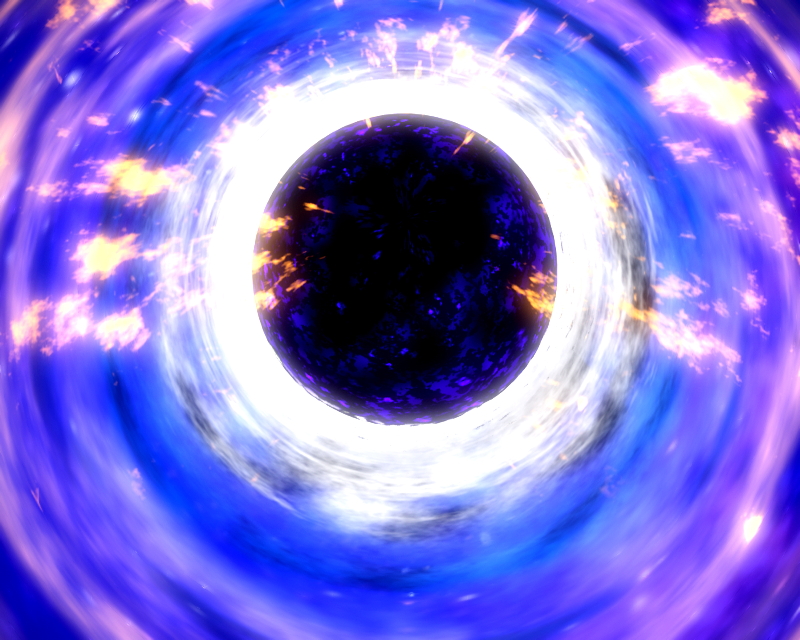
 Credit: NASA
Credit: NASA
Fixing a Hole
Black holes, those regions where space is so warped not even light can escape, are probably the weirdest objects in the Universe. Astronomers are nonplussed by black holes with masses of millions of time the mass of the sun, and often find black holes with masses of only 5-10 times the mass of the sun. But how low can black hole masses go? Oddly enough, finding low mass black holes is challenging, because such objects can easily be confused with neutron stars. Now there's evidence of the littlest black hole, an object in orbit around a "normal" mass-losing star in a binary system called XTE J1650-500. Astronomers Nikolai Shaposhnikov and Lev Titarchuk have developed a technique which relates "quasi-periodic oscillations" in X-ray brightness, or QPOs, to the mass of a black hole. Such QPOs are thought to be produced by bright spots in the accretion disk whirling around the black hole before being swallowed, like the bright spots in the artist interpretation above. By measuring the frequency of the QPOs in XTE J1650-500 with the Rossi X-ray Timing Explorer, these two astronomers derived a record low mass of only 3.8 solar masses for the black hole in this system.
<
HEA Dictionary ● Archive
● Search HEAPOW
● Other Languages
● HEAPOW on Facebook
● Download all Images
● Education ● HEAD
>
Each week the HEASARC
brings you new, exciting and beautiful images from X-ray and Gamma ray
astronomy. Check back each week and be sure to check out the HEAPOW archive!
Page Author: Dr. Michael F. Corcoran
Last modified Monday, 26-Feb-2024 17:24:10 EST


